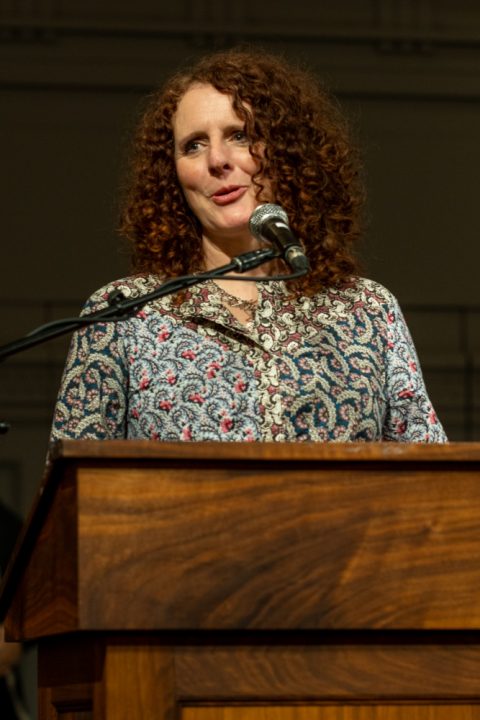
Introductions: Maggie O’Farrell
October 17, 2022
By Rebecca Hoods, Executive Director
It is now my immense pleasure to introduce Maggie O’Farrell. Born in Northern Ireland and now a resident of Edinburgh, O’Farrell is the author of nine novels, a memoir, and two books for children.
I came to her work first through her 2017 memoir, I Am, I Am, I Am: Seventeen Brushes with Death, which I blazed through early in the pandemic. It chronicles a quote “life, told only through near-death experiences,” as she describes it to her mother in the book. Living, as we were in a global near-death experience, I read the book hungrily, as if it were a how-to book for how to survive. It is instead a personal history of a child, a teenaged girl, an unmarried traveler, a lover, a wife, a mother—all of them in danger of losing themselves or someone they love. All of them experiencing the kind of near-miss, an air kiss with death—European style, on both cheeks—that most of us, especially those subject to misogyny know all too well.
O’Farrell’s work in both memoir and fiction dwells on this near-miss, the life that walks alongside this one, the ghosts and choices that haunt us. O’Farrell’s latest, The Marriage Portrait tells the story of a 15-year old girl married off—and killed off—in sixteenth century Italy to bolster her family’s position and provide the Duke with an heir. If you haven’t read the book yet—never fear, her death is announced on page one. Inspired in part by the Robert Browning poem, “My Last Duchess,” the novel is of course historical fiction, but also reminded me of the present-day ways that women’s bodies and reproductive choices have always been pawns for political power. The Boston Globe praised the book, saying “O’Farrell demonstrates fiction’s ability to offer counter narratives to those of received history, to open before us imaginative abundance and a tremulous sense of possibility.”
And of course, before The Marriage Portrait, came the best-selling Hamnet: A Novel of the Plague. Many years in the making, the novel was released during our own plague, an eerie alignment of the path of the book and our global path. And like in The Marriage Portrait, we know from the start that the boy, Hamnet, will not survive the plague, and will go on to inspire what is arguably Shakespeare’s most tragic play. A footnote in most histories of Shakespeare, the child, and his mother, Agnes, come to vivid life, offering vivid grief for the reader. The novel won the 2020 Women’s Prize for fiction and the National Book Critics Circle Award for fiction. It was named one of the 10 best books of the year by the New York Times which described it as “at once about the transfiguration of life into art, and at the same time… a master class in how she, herself, does it.”
In The Marriage Portrait I was struck by this passage in which our protagonist, Lucrezia, considers a piece of embroidery: quote: “She turns the hoop over and inspects the underside. She has always had a secret liking for this part of the embroidery, the ‘wrong’ side, congested with knots, striations of silk and twists of thread. How much more interesting it is, with its frank display of the labour needed to attain the perfection of the finished piece.”
How much more interesting the wrong side of history is in Maggie O’Farrell’s hands! And how lucky we are to get to explore the knotted and complicated, the painting under the painting, through her many marvelous works. Please join me in welcoming the historian of the delicate tether between near and miss, Maggie O’Farrell.
Rebecca Hoogs gave this introduction to open our 2022/23 Literary Arts Series event with Maggie O’Farrell on October 11, 2022.